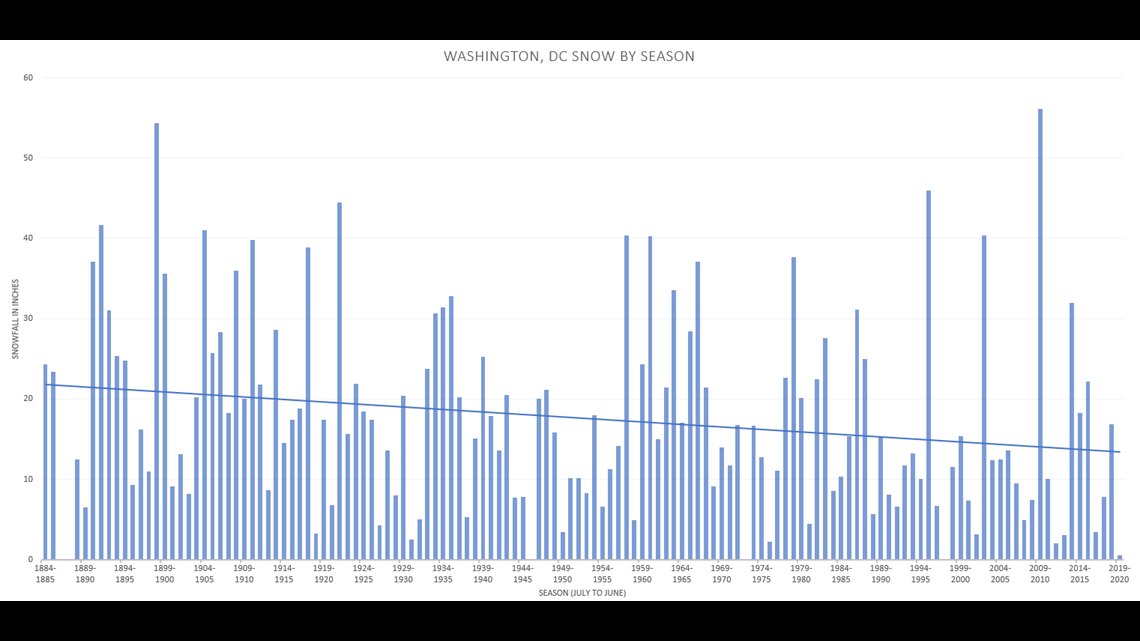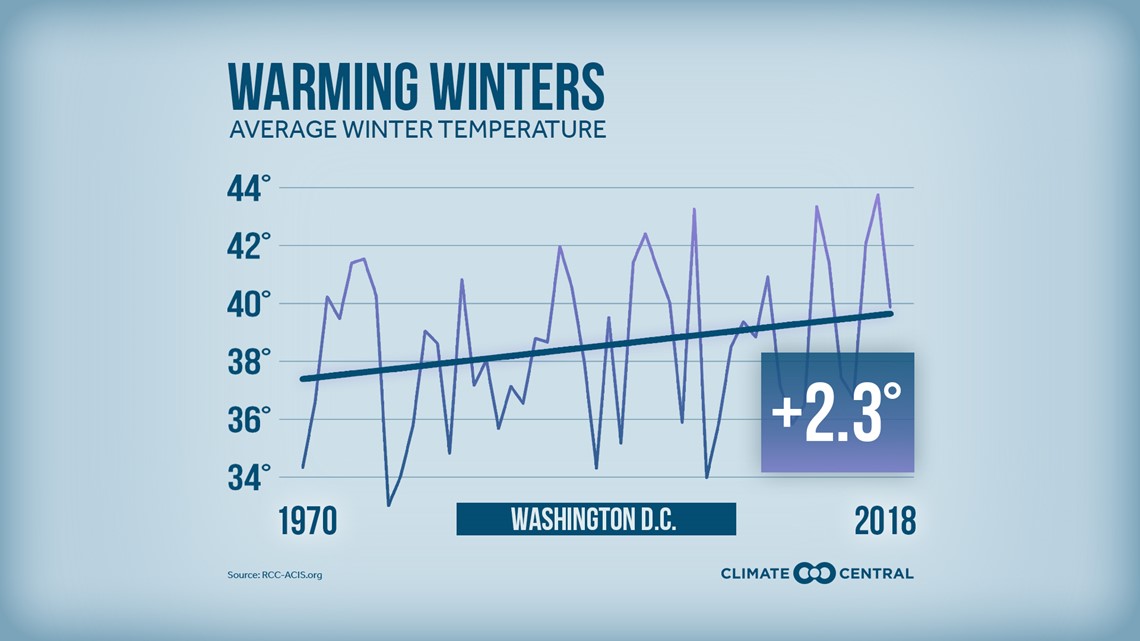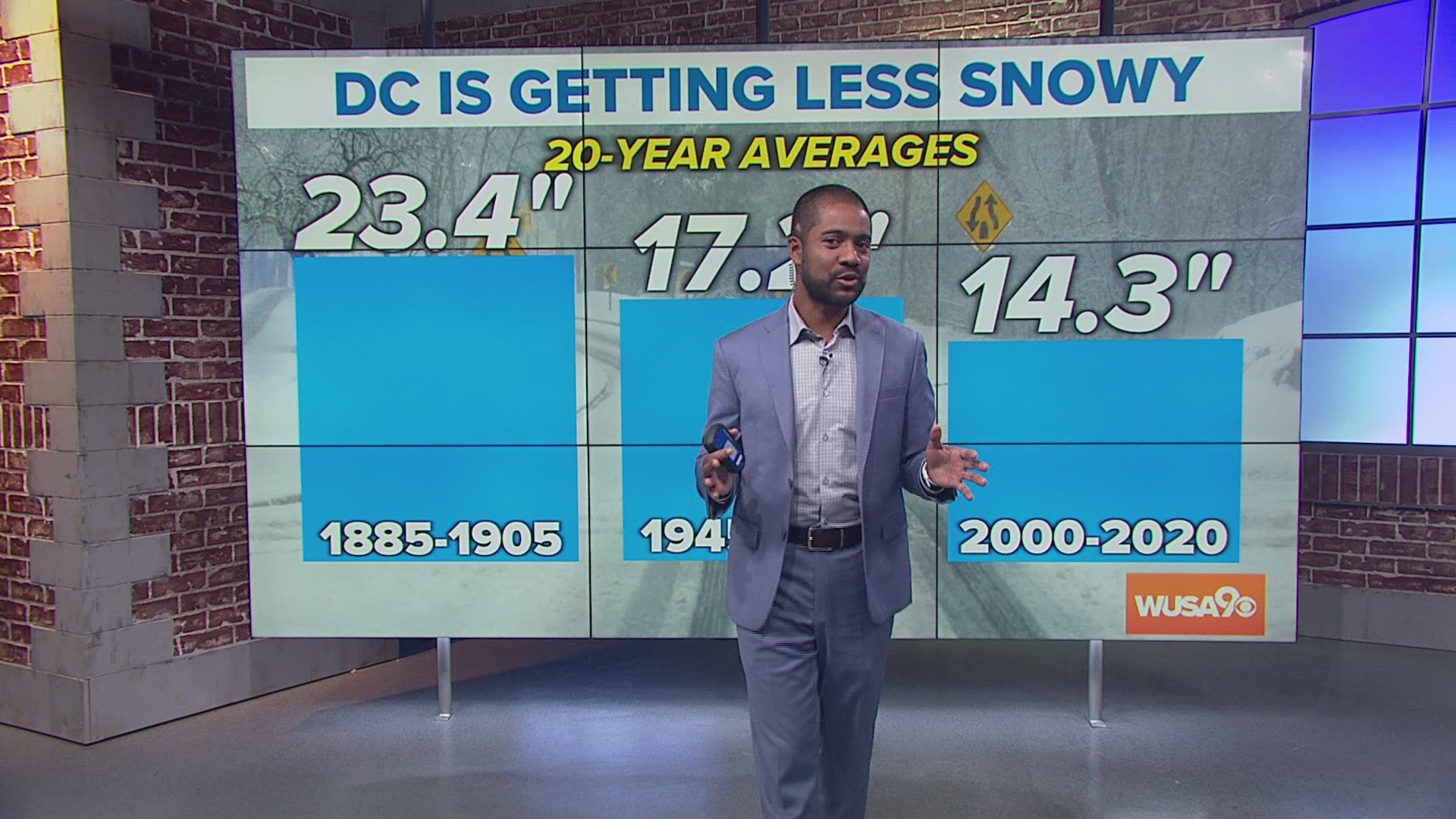WASHINGTON — A recent post about snowfall trends in Washington, D.C. on Reddit has had a lot of people talking in the DMV.
In the post, a graph is presented using snowfall data in D.C. since 1887. The graph’s trend line shows snow has been decreasing in D.C. over the last 132 years.
We dug into data from the National Weather Service ourselves and found, in general, this is true.
The snowfall average for Washington, D.C. has dropped from over 23 inches in the first two decades of records (winter 1885 to winter 1905) to just 14.3 inches over the last two decades (winter 2000 to winter 2020).
A similar, but less drastic, drop in snowfall has occurred at Dulles, however records there only go back to winter 1962-1963. Snow over the first two decades of records averaged 24.2-inches per winter. Since 2000, the average has dipped to 21-inches.
However, it is worth noting that the four snowiest winters on record at Dulles have occurred in the last 25 years. In the winter of 1995 - 1996 Dulles recorded 61.9" of snow; in 2002 - 2003 50.1" of snow fell; in that crazy winter of 2009 - 2010 Dulles recorded a recorded setting 73.2"; and more recently, in the winter of 2013 - 2014 52.8" of snow fell. March 2014 was the snowiest March on record with 19.8".


It’s important to note several things about this data. First, the location of weather recording in the D.C. region has changed multiple times before being moved to National Airport in 1941. This has certainly impacted how much snow has been recorded for Washington, D.C. records, since snowfall is highly variable by location.
Secondly, land use and development has a profound impact on snowfall. The D.C. region has grown immensely, especially over the last several decades. The increased concrete in the form of buildings and roads leads to the urban “heat island” effect. This raises temperatures in cities and can lead to reduced snowfall accumulation.
Lastly, climate change has also likely had an impact on snowfall rates over the last several decades. According to data from Climate Central, winter snow has slowly declined for D.C. since 1970, which compares favorably with the data we observed. Additionally, winters have warmed in D.C. since 1970 by 2 degrees.



